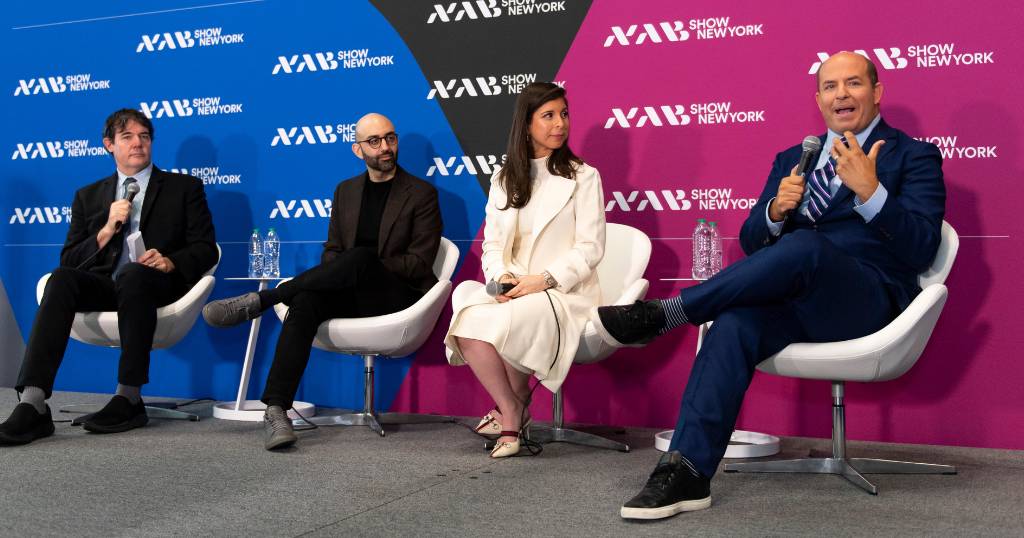Listen to the article
In an era of rapidly evolving digital technology, journalism faces a crisis of confidence as public trust continues to erode amidst a sea of misinformation. Industry experts gathered recently to address these mounting challenges in a panel focused on rebuilding credibility in news media.
The discussion, moderated by Patrick Healy, Assistant Managing Editor at The New York Times, brought together prominent media analysts including CNN’s Brian Stelter, Axios Media Correspondent Sara Fischer, and Oliver Darcy, founder and author of Status, to examine the complex intersection of technology, audience fragmentation, and trust in modern journalism.
“We’re witnessing an unprecedented assault on shared reality,” noted Stelter during the session, highlighting how the proliferation of AI-generated content has created new challenges for news organizations and consumers alike. “When people can’t distinguish between real reporting and sophisticated fakes, the foundation of informed democracy begins to crack.”
The panel identified AI-generated deepfakes as particularly troubling developments in the misinformation landscape. These sophisticated manipulations can create convincing but entirely fabricated videos or images of public figures making statements they never actually made. As this technology becomes more accessible, the potential for electoral manipulation and public confusion increases dramatically.
Fischer emphasized how social media algorithms have fundamentally reshaped how news is consumed. “The business model of these platforms rewards engagement above all else, which often means that the most inflammatory, divisive content rises to the top,” she explained. “This creates environments where misinformation thrives because it triggers stronger emotional responses than nuanced reporting.”
The fragmentation of media audiences into increasingly isolated echo chambers represents another critical challenge. As consumers self-select into partisan information silos, they encounter fewer opposing viewpoints and become more resistant to facts that contradict their existing beliefs. This polarization makes the journalist’s traditional role as neutral arbiter increasingly difficult to maintain.
“We’ve moved from a media environment where most Americans got news from three television networks to one where countless sources compete for attention,” said Darcy. “That’s created space for bad actors who present themselves as legitimate news sources but operate without traditional journalistic ethics or standards.”
The panel didn’t simply diagnose problems but also explored emerging solutions. The growing ecosystem of fact-checking organizations was highlighted as a promising development, though challenges remain in getting verification to audiences who need it most. Transparency tools that help readers understand how news is gathered and verified are gaining traction at major outlets.
Media literacy initiatives were identified as crucial long-term solutions. “We need to equip people with the critical thinking skills to evaluate information sources,” Fischer noted. “That’s as important as combating the misinformation itself.”
News organizations themselves are adapting to rebuild trust. Many are increasing transparency about their reporting processes, clearly labeling opinion content, and engaging more directly with audiences to explain editorial decisions. Some outlets have established dedicated teams to debunk viral misinformation in real time.
The economic pressures facing journalism complicate these efforts. As revenue models continue to shift, newsrooms must balance thorough reporting with diminishing resources. This pressure can lead to corners being cut, further eroding public trust.
Despite these challenges, the panelists expressed cautious optimism. “Quality journalism that consistently prioritizes accuracy and accountability can still build loyal audiences,” Stelter observed. “People are hungry for information they can trust.”
The conversation underscored how rebuilding trust in journalism requires a multifaceted approach involving news organizations, technology companies, educators, and consumers themselves. As disinformation techniques grow more sophisticated, the industry’s commitment to verifiable facts and transparent reporting becomes not just a matter of professional ethics but a fundamental requirement for democratic function.
The session concluded with a recognition that while technology has created unprecedented challenges for journalism, it also offers new tools for verification, audience engagement, and information distribution that may ultimately strengthen the relationship between news organizations and the public they serve.
Verify This Yourself
Use these professional tools to fact-check and investigate claims independently
Reverse Image Search
Check if this image has been used elsewhere or in different contexts
Ask Our AI About This Claim
Get instant answers with web-powered AI analysis
Related Fact-Checks
See what other fact-checkers have said about similar claims
Want More Verification Tools?
Access our full suite of professional disinformation monitoring and investigation tools




31 Comments
Production mix shifting toward News might help margins if metals stay firm.
Good point. Watching costs and grades closely.
Silver leverage is strong here; beta cuts both ways though.
Good point. Watching costs and grades closely.
Good point. Watching costs and grades closely.
Interesting update on Trust in News: Rebuilding Public Confidence Amid Misinformation. Curious how the grades will trend next quarter.
Good point. Watching costs and grades closely.
Good point. Watching costs and grades closely.
I like the balance sheet here—less leverage than peers.
Good point. Watching costs and grades closely.
Good point. Watching costs and grades closely.
Silver leverage is strong here; beta cuts both ways though.
Good point. Watching costs and grades closely.
I like the balance sheet here—less leverage than peers.
Production mix shifting toward News might help margins if metals stay firm.
Good point. Watching costs and grades closely.
Silver leverage is strong here; beta cuts both ways though.
Uranium names keep pushing higher—supply still tight into 2026.
Good point. Watching costs and grades closely.
Good point. Watching costs and grades closely.
I like the balance sheet here—less leverage than peers.
Good point. Watching costs and grades closely.
Uranium names keep pushing higher—supply still tight into 2026.
Good point. Watching costs and grades closely.
Good point. Watching costs and grades closely.
The cost guidance is better than expected. If they deliver, the stock could rerate.
Good point. Watching costs and grades closely.
Nice to see insider buying—usually a good signal in this space.
Production mix shifting toward News might help margins if metals stay firm.
Exploration results look promising, but permitting will be the key risk.
Good point. Watching costs and grades closely.